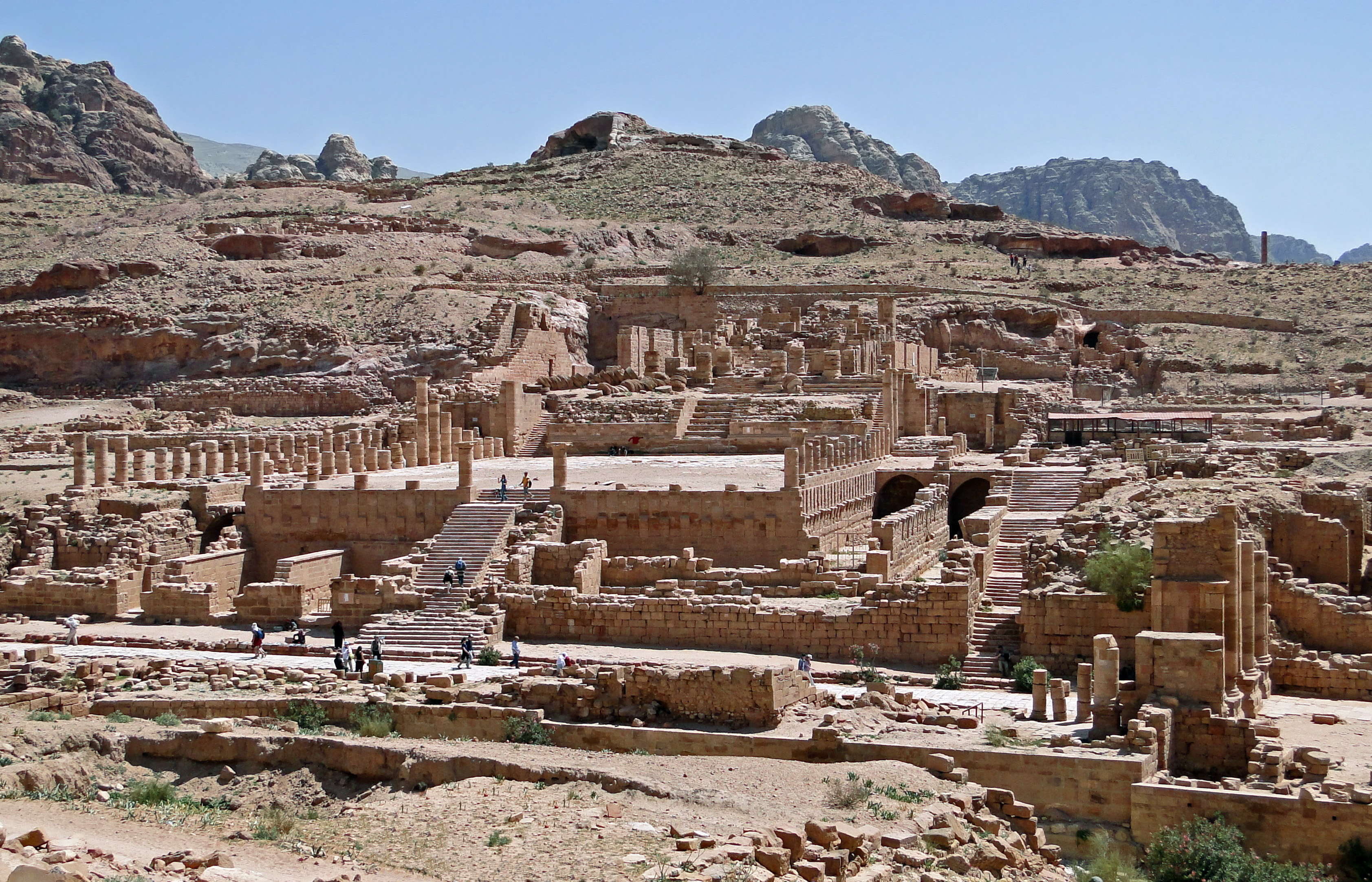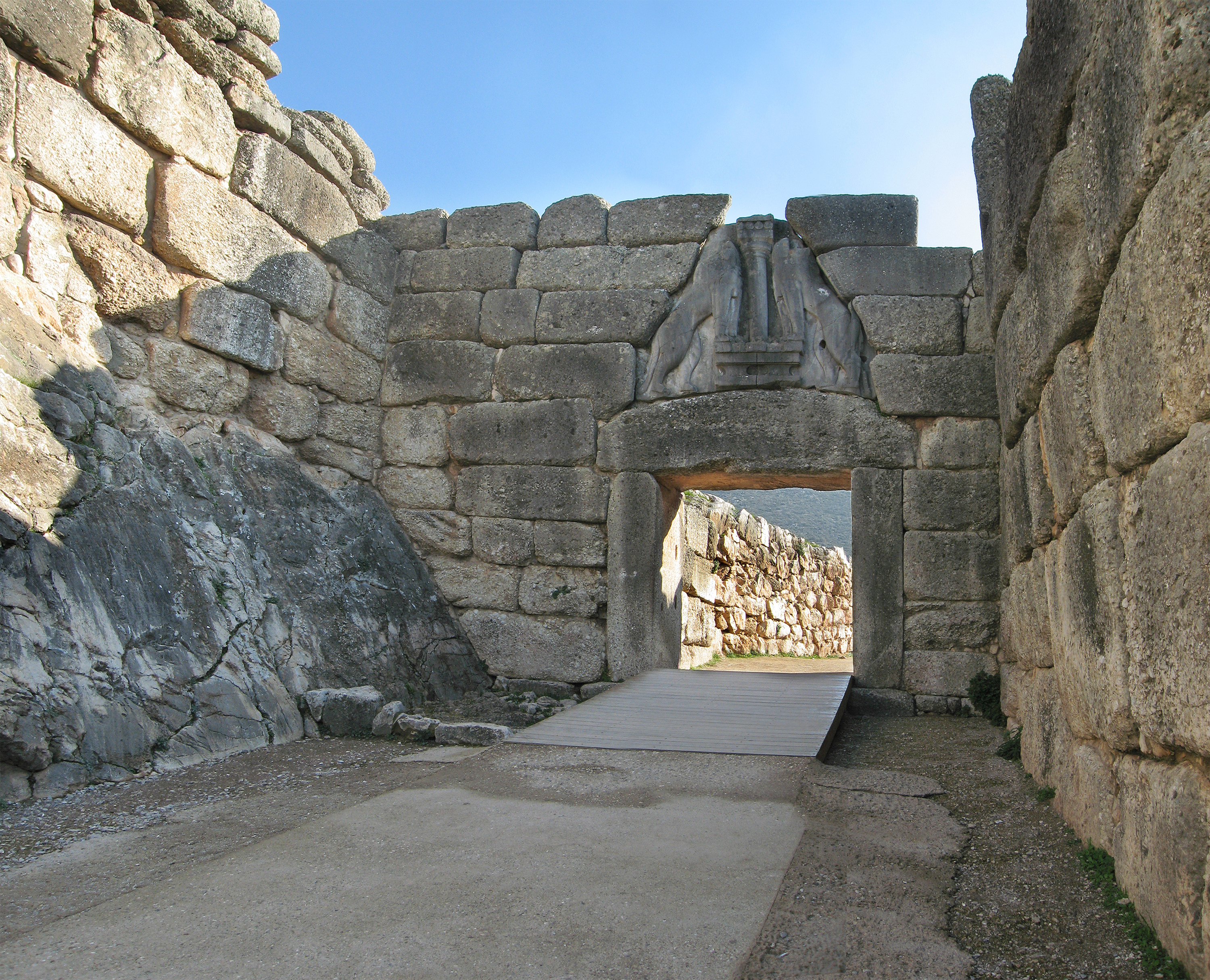|
Ormenium
Ormenium () was a town of ancient Thessaly, mentioned in the Catalogue of Ships in Homer, Homer's ''Iliad'', along with Hypereia and Asterium, as belonging to Eurypylus (king of Thessaly), Eurypylus. In Greek mythology, it was said to have been founded by Ormenus, the grandson of Aeolus, and was the birthplace of Phoenix (son of Amyntor), Phoenix (a grandson of Ormenus). Strabo identifies this town with a place in ancient Magnesia, Magnesia named Orminium, situated at the foot of Pelion, Mt. Pelion near the Pagasaean Gulf, at the distance of 27 stadion (unit), stadia from Demetrias, on the road passing through Iolcus, which was 7 stadia from Demetrias and 20 from Orminium. William Martin Leake, however, observes that the Ormenium of Homer can hardly have been the same as the Orminium of Strabo, since it appears from the situation of Asterium that Eurypylus ruled over the plains of Thessaliotis, which are watered by the Apidanus and Enipeas (Thessaly), Enipeus. The questioning of Strab ... [...More Info...] [...Related Items...] OR: [Wikipedia] [Google] [Baidu] |
Ormenus
In Greek mythology Ormenus or Ormenos (Ancient Greek: Ὄρμενος) is the name of eight men. * Ormenus, one of the Telchines. *Ormenus, king of Ormenion in Thessaly and son of Cercaphus. He was the father of Amyntor and Euaemon. *Ormenus, one of the warriors in the army of the ''Seven against Thebes''. He fell in the fighting. * Ormenus, a Trojan warrior killed by Polypoetes during the Trojan War. * Ormenus, a Trojan soldier who was shot dead by the Greek hero, Teucer, during the Trojan War. * Ormenus, father of Ctesius, king of the isle of Syra. Ctesius is the father of Eumaeus. *Ormenus, one of the Suitors of Penelope who came from Dulichium along with other 56 wooers. He, with the other suitors, was shot dead by Odysseus with the help of Eumaeus, Philoetius, and Telemachus.Apollodorus, Epitome 7.33 Notes References * Apollodorus, ''The Library'' with an English Translation by Sir James George Frazer, F.B.A., F.R.S. in 2 Volumes, Cambridge, MA, Harvard University ... [...More Info...] [...Related Items...] OR: [Wikipedia] [Google] [Baidu] |
Armenium
Armenium or Armenion () was a town of Pelasgiotis in ancient Thessaly, situated between Pherae and Larissa, near Boebeis Lake, said to have been the birthplace of Armenus, who accompanied Jason to Asia, and gave his name to the country of Armenia. It is hardly necessary to remark, that this tale, like so many others, arose from the accidental similarity of the names. There is conjecture that this town may be the same as that of Ormenium, but others equivocate or disagree. The site of Armenium is located near the modern site of Petra Petra (; "Rock"), originally known to its inhabitants as Raqmu (Nabataean Aramaic, Nabataean: or , *''Raqēmō''), is an ancient city and archaeological site in southern Jordan. Famous for its rock-cut architecture and water conduit systems, P .... References Populated places in ancient Thessaly Former populated places in Greece Pelasgiotis {{AncientThessaly-geo-stub ... [...More Info...] [...Related Items...] OR: [Wikipedia] [Google] [Baidu] |
Demetrias
Demetrias () was a Greek city in Magnesia in ancient Thessaly (east central Greece), situated at the head of the Pagasaean Gulf, near the modern city of Volos. History It was founded in 294 BCE by Demetrius Poliorcetes, who removed thither the inhabitants of Nelia, Pagasae, Ormenium, Rhizus, Sepias, Olizon, Boebe and Iolcos, all of which were afterwards included in the territory of Demetrias. It soon became an important place, and the favourite residence of the Macedonian kings. It was favourably situated for commanding the interior of Thessaly, as well as the neighbouring seas; and such was the importance of its position that it was called by Philip V of Macedon one of the three fetters of Greece, the other two being Chalcis and Corinth. In 196 BCE, the Romans, victorious in the Battle of Cynoscephalae over Philip V in the previous year, took possession of Demetrias and garrisoned the town. Four years later the Aetolian League captured it by surprise. Th ... [...More Info...] [...Related Items...] OR: [Wikipedia] [Google] [Baidu] |
Ancient Thessaly
Thessaly or Thessalia (Attic Greek: , ''Thessalía'' or , ''Thettalía'') was one of the traditional regions of Ancient Greece. During the Mycenaean Greece, Mycenaean period, Thessaly was known as Aeolia, a name that continued to be used for one of the major tribes of Greece, the Aeolians, and their dialect of Greek, Aeolic Greek, Aeolic. Geography At its greatest extent, ancient Thessaly was a wide area stretching from Mount Olympos, Mount Olympus to the north to the Spercheios Valley to the south. Thessaly is a geographically diverse region, consisting of Thessalian plain, broad central plains surrounded by mountains. The plains are bounded by the Pindos Mountains to the west, Mount Othrys to the south, the Pelion and Mount Ossa (Greece), Ossa ranges to the east, and Mount Olympos to the North. The central plains consist of two basins, the Larissa, Larisa basin and the Karditsa basin, drained by the Pineios (Thessaly), Pineios River into the Vale of Tempe. The Pagasetic Gulf in s ... [...More Info...] [...Related Items...] OR: [Wikipedia] [Google] [Baidu] |
Stadion (unit)
The stadion (plural stadia, ; latinized as stadium), also anglicized as stade, was an ancient Greek unit of length, consisting of 600 Ancient Greek feet ('' podes''). Its exact length is unknown today; historians estimate it at between 150 m and 210 m. Calculations According to Herodotus, one stadium was equal to 600 Greek feet (''podes''). However, the length of the foot varied in different parts of the Greek world, and the length of the stadion has been the subject of argument and hypothesis for hundreds of years. An empirical determination of the length of the stadion was made by Lev Vasilevich Firsov, who compared 81 distances given by Eratosthenes and Strabo with the straight-line distances measured by modern methods, and averaged the results. He obtained a result of about . Various equivalent lengths have been proposed, and some have been named. Among them are: Which measure of the stadion is used can affect the interpretation of ancient texts. For example, the ... [...More Info...] [...Related Items...] OR: [Wikipedia] [Google] [Baidu] |
Populated Places In Ancient Thessaly
Population is a set of humans or other organisms in a given region or area. Governments conduct a census to quantify the resident population size within a given jurisdiction. The term is also applied to non-human animals, microorganisms, and plants, and has specific uses within such fields as ecology and genetics. Etymology The word ''population'' is derived from the Late Latin ''populatio'' (a people, a multitude), which itself is derived from the Latin word ''populus'' (a people). Use of the term Social sciences In sociology and population geography, population refers to a group of human beings with some predefined feature in common, such as location, race, ethnicity, nationality, or religion. Ecology In ecology, a population is a group of organisms of the same species which inhabit the same geographical area and are capable of interbreeding. The area of a sexual population is the area where interbreeding is possible between any opposite-sex pair within the a ... [...More Info...] [...Related Items...] OR: [Wikipedia] [Google] [Baidu] |
Petra (Thessaly)
Petra (; "Rock"), originally known to its inhabitants as Raqmu (Nabataean Aramaic, Nabataean: or , *''Raqēmō''), is an ancient city and archaeological site in southern Jordan. Famous for its rock-cut architecture and water conduit systems, Petra is also called the "Rose City" because of the colour of the sandstone from which it is carved. The city is one of the New 7 Wonders of the World and a UNESCO World Heritage Site. The area around Petra has been inhabited from as early as 7000 BC, and was settled by the Nabataeans, a nomadic Arab people, in the 4th century BC. Petra would later become the capital city of the Nabataean Kingdom in the second century BC. The Nabataeans invested in Petra's proximity to the incense trade routes by establishing it as a major regional trading hub, which gained them considerable revenue. Unlike their enemies, the Nabataeans were accustomed to living in the barren deserts and thus were able to defend their kingdom. They were particularly sk ... [...More Info...] [...Related Items...] OR: [Wikipedia] [Google] [Baidu] |
Goritsa (Greece)
Goritsa is a hill and an archaeological site in Volos, Greece Greece, officially the Hellenic Republic, is a country in Southeast Europe. Located on the southern tip of the Balkan peninsula, it shares land borders with Albania to the northwest, North Macedonia and Bulgaria to the north, and Turkey to th ..., immediately east of the city centre. It was examined in the early 1970s by a Dutch team of archaeologists, revealing a planned ancient city with a regular street grid covering most of the hill. References Former populated places in Greece Populated places in ancient Thessaly Thessalian city-states Cities in ancient Greece Ancient Greek archaeological sites in Thessaly {{Greece-archaeology-stub ... [...More Info...] [...Related Items...] OR: [Wikipedia] [Google] [Baidu] |
Mycenaean Greece
Mycenaean Greece (or the Mycenaean civilization) was the last phase of the Bronze Age in ancient Greece, spanning the period from approximately 1750 to 1050 BC.. It represents the first advanced and distinctively Greek civilization in mainland Greece with its palatial states, urban organization, works of art, and writing system.. The Mycenaeans were mainland Greek peoples who were likely stimulated by their contact with insular Minoan Crete and other Mediterranean cultures to develop a more sophisticated sociopolitical culture of their own. The most prominent site was Mycenae, after which the culture of this era is named. Other centers of power that emerged included Pylos, Tiryns, and Midea in the Peloponnese, Orchomenos, Thebes, and Athens in Central Greece, and Iolcos in Thessaly. Mycenaean settlements also appeared in Epirus, Macedonia, on islands in the Aegean Sea, on the south-west coast of Asia Minor, and on Cyprus, while Mycenaean-influenced settlements appear ... [...More Info...] [...Related Items...] OR: [Wikipedia] [Google] [Baidu] |
Farsala
Farsala (), known in Antiquity as Pharsalos (, ), is a town in southern Thessaly, in Greece. Farsala is located in the southern part of Larissa (regional unit), Larissa regional unit, and is one of its largest settlements. Farsala is an economic and agricultural centre of the region. Cotton and livestock are the main agricultural products, and many inhabitants are employed in the production of textile. The area is mostly famous for being the birthplace of the mythical ancient Greek hero Achilles, and the site of a Battle of Pharsalus, major battle between Roman generals Gaius Julius Caesar and Gnaeus Pompeius Magnus in 48 BC. Geography Farsala lies at the southern edge of the Thessalian Plain, 4 km south of the river Enipeas (Thessaly), Enipeas. The Greek National Road 3 (Larissa - Lamia (city), Lamia) and the Greek National Road 30 (Karditsa - Volos) pass through the town. The Palaiofarsalos railway station (litt. "''Ancient Pharsalus''"), on the Piraeus–Platy railway, ... [...More Info...] [...Related Items...] OR: [Wikipedia] [Google] [Baidu] |
Enipeas (Thessaly)
The Enipeas () or Enipeus () is a river in central Greece, tributary of the Pineios near Farkadona. It is long. p. 12 Its source is in the northern part of , on the plateau of . Its course runs through several of the ''tetrades'' of ancient , from |





